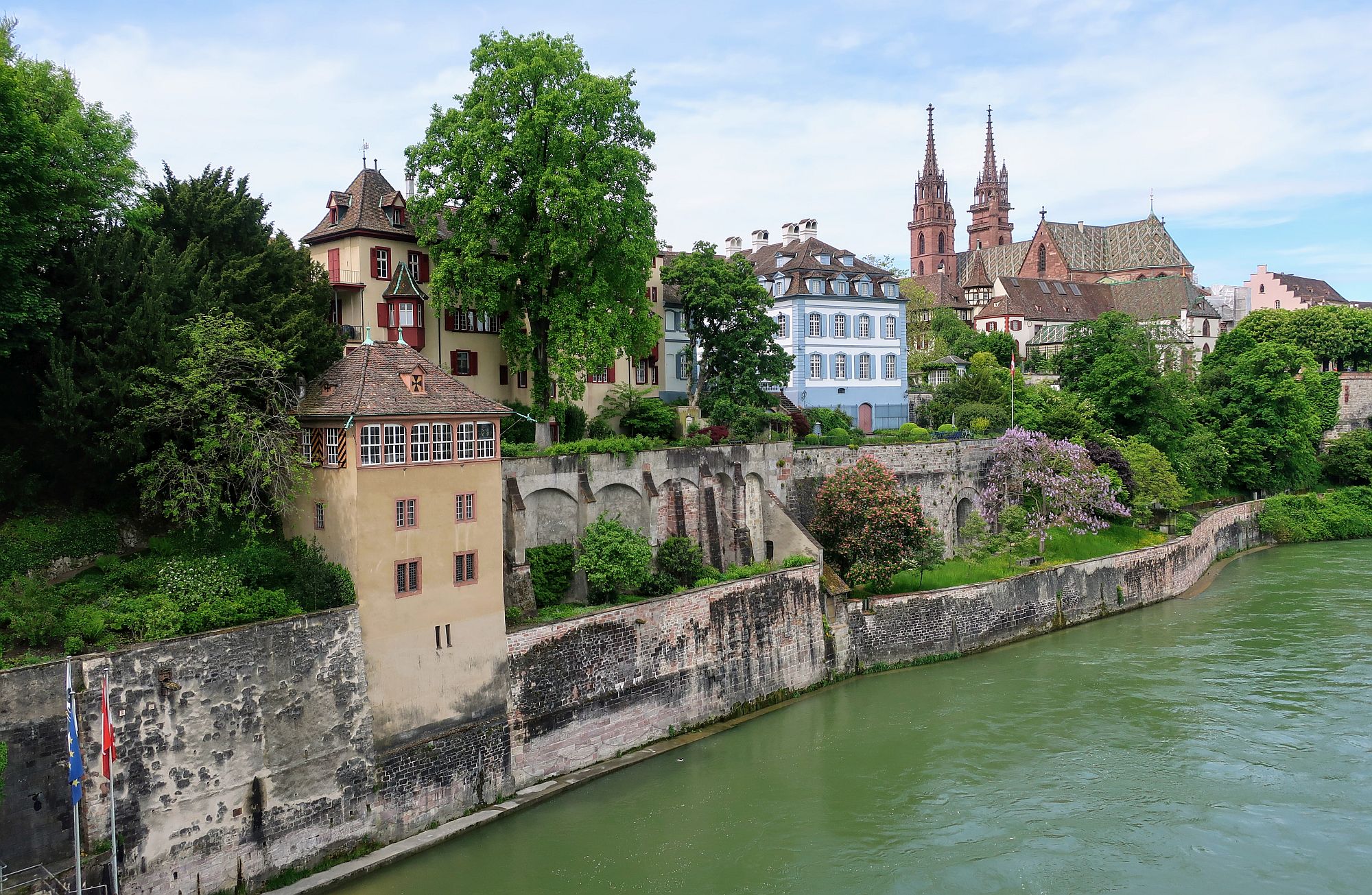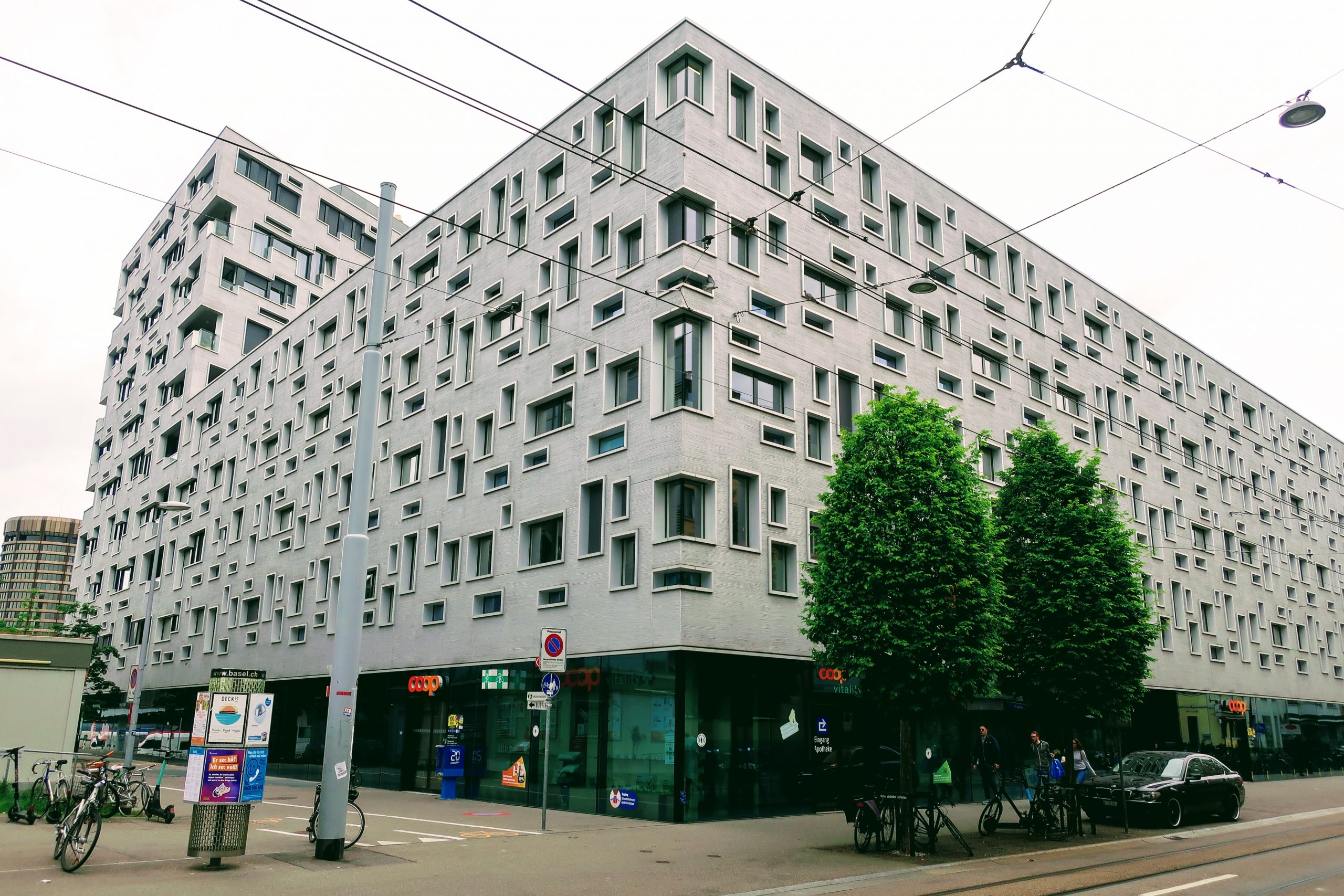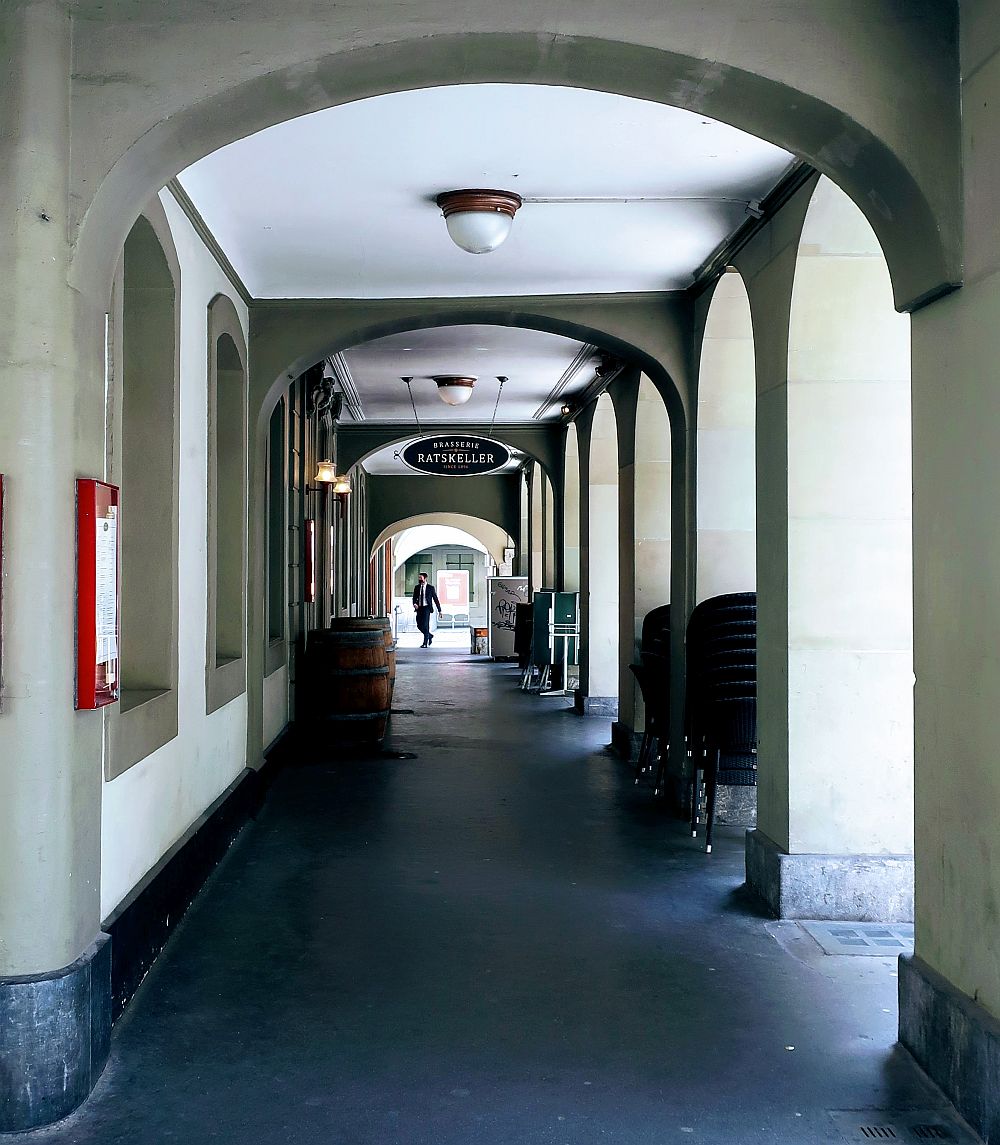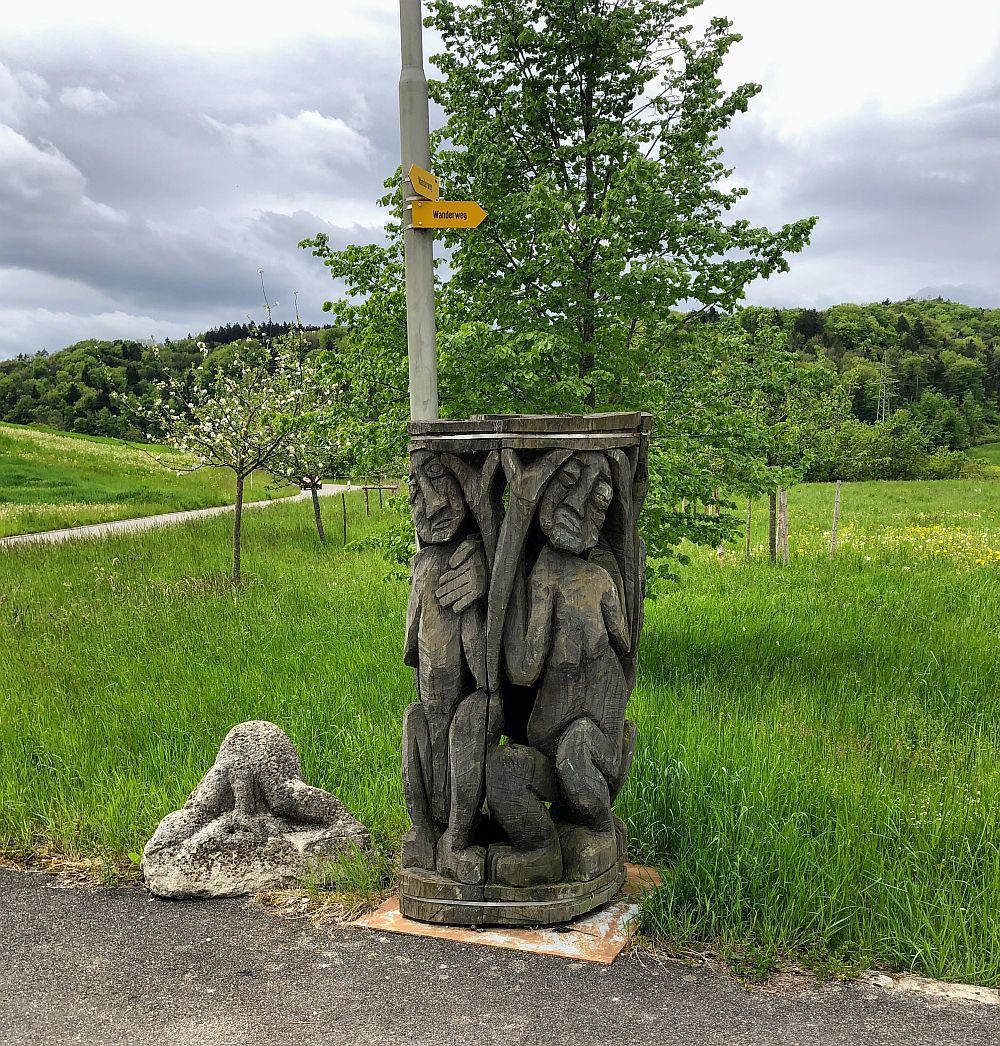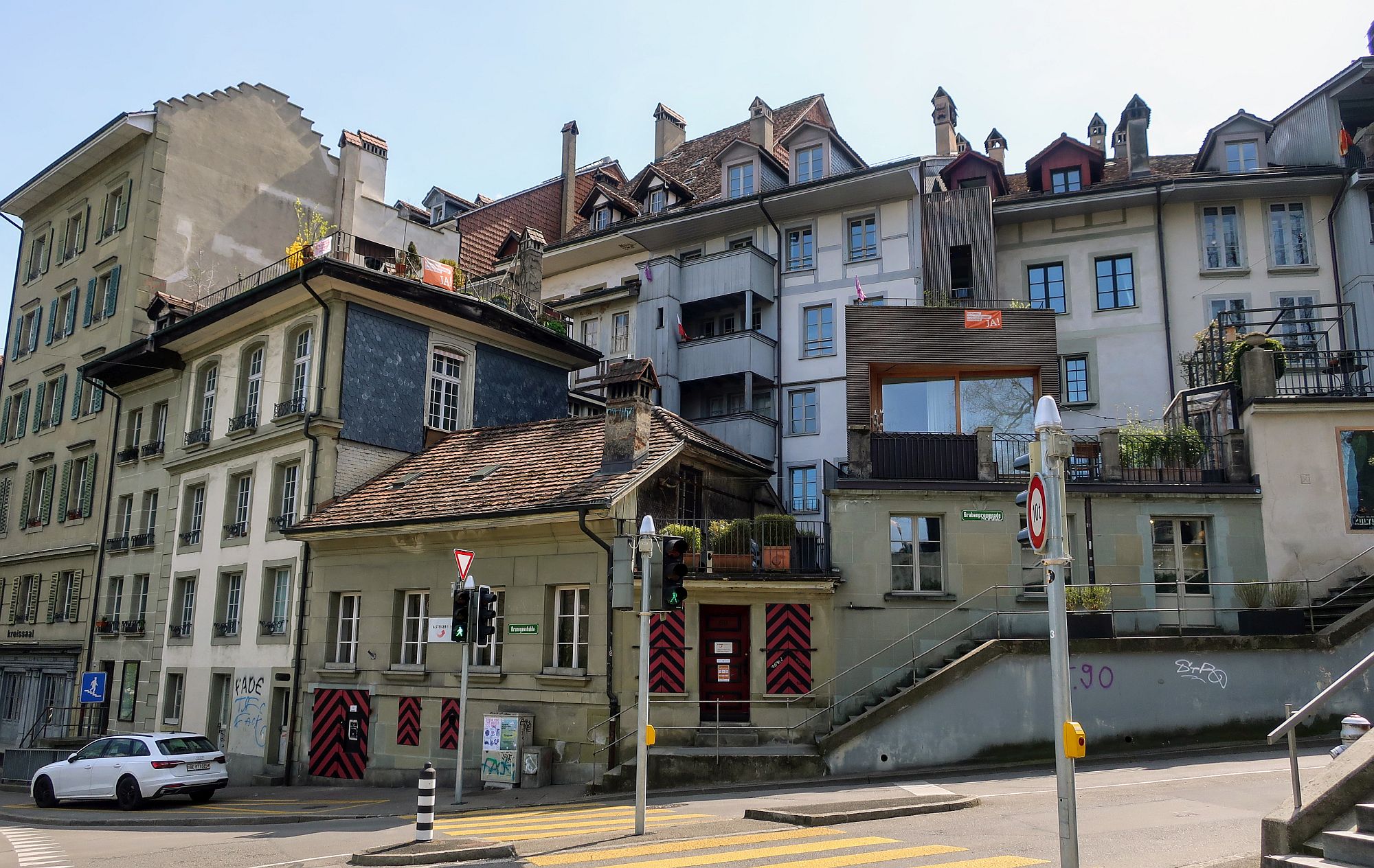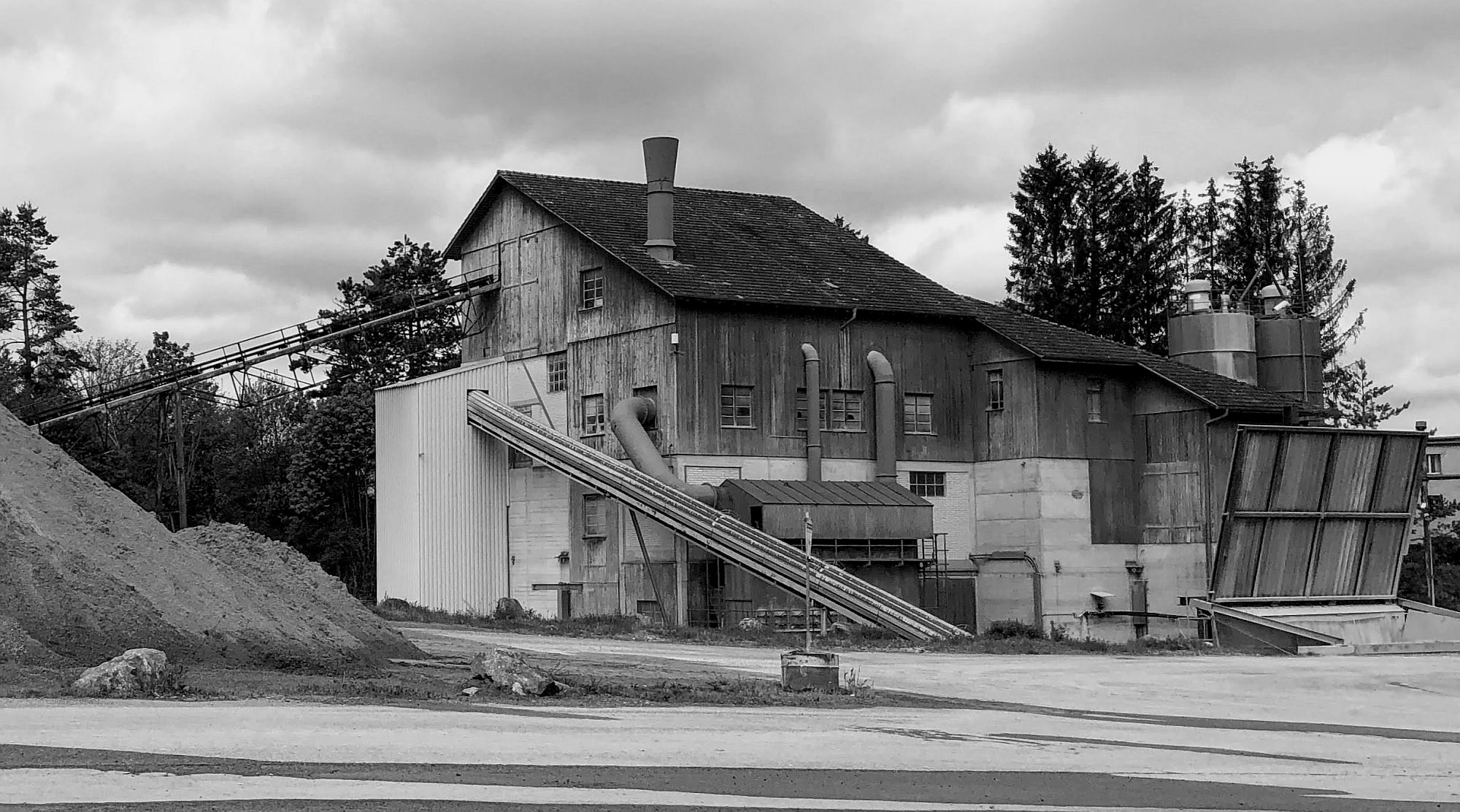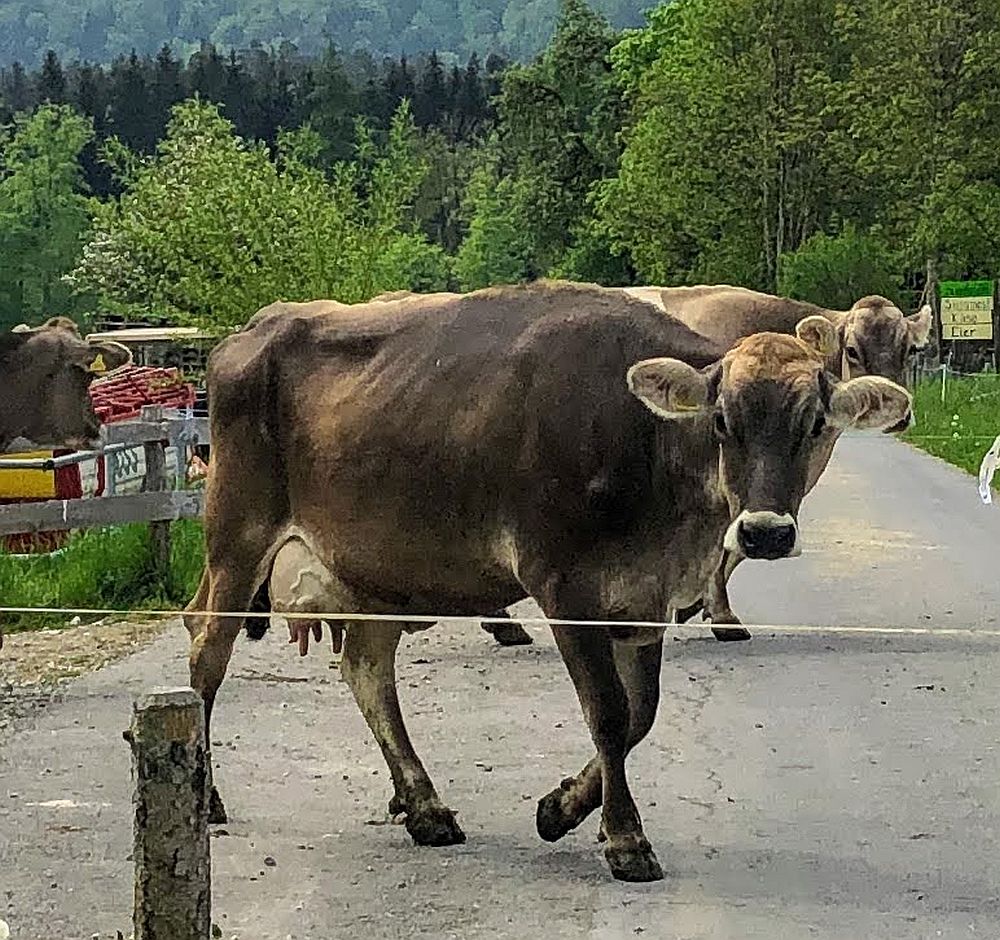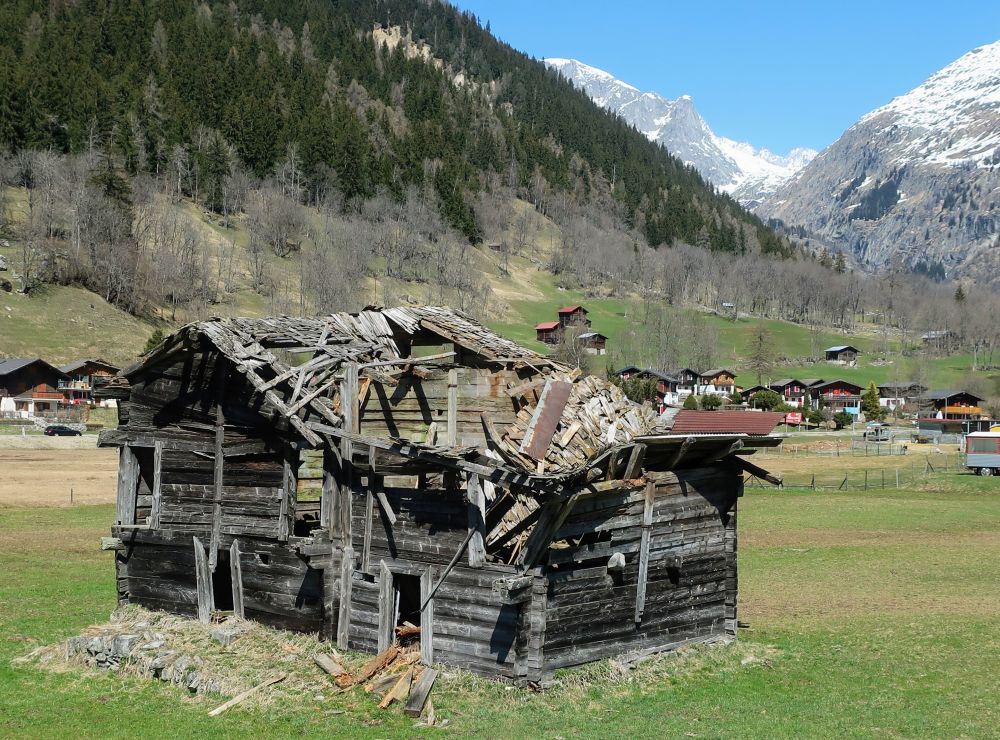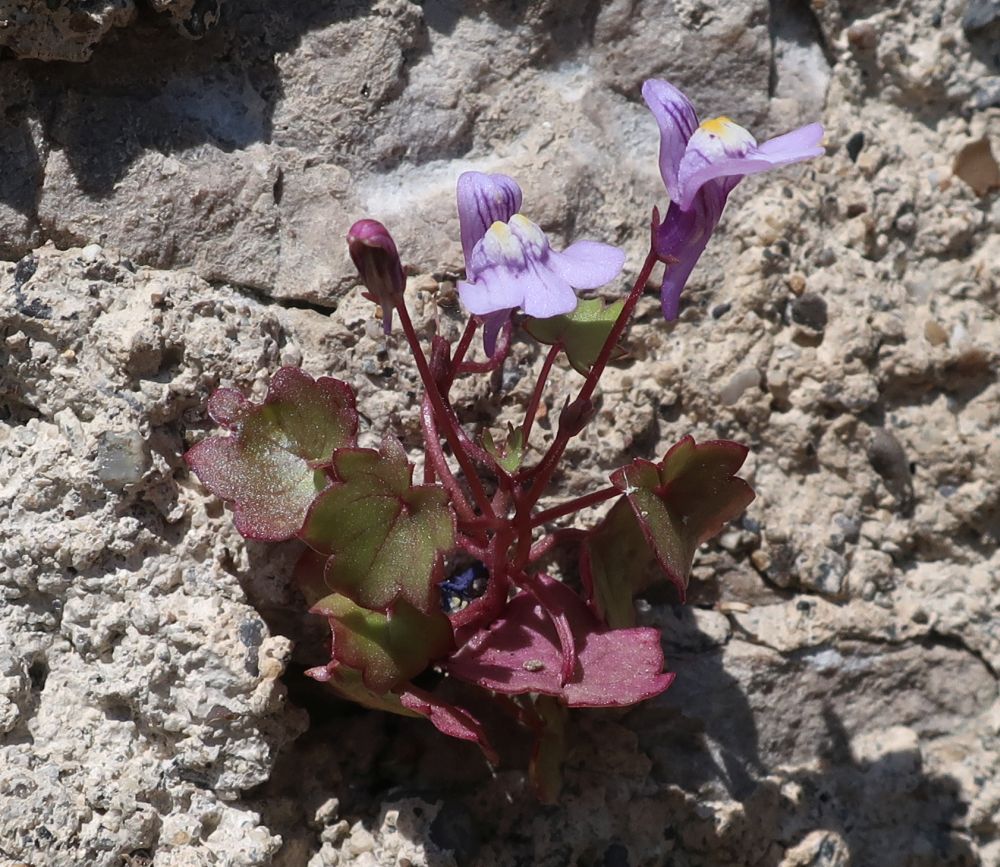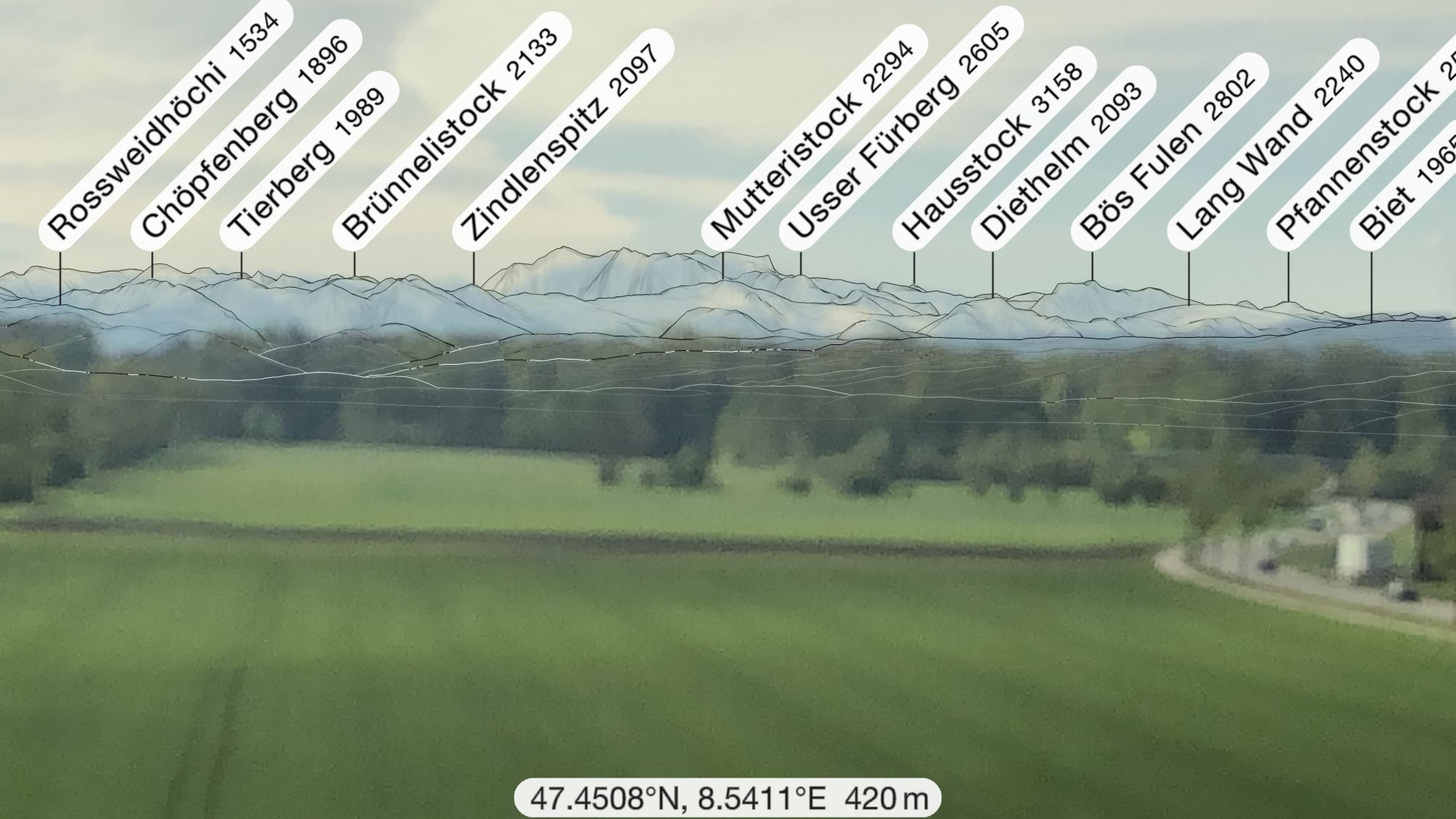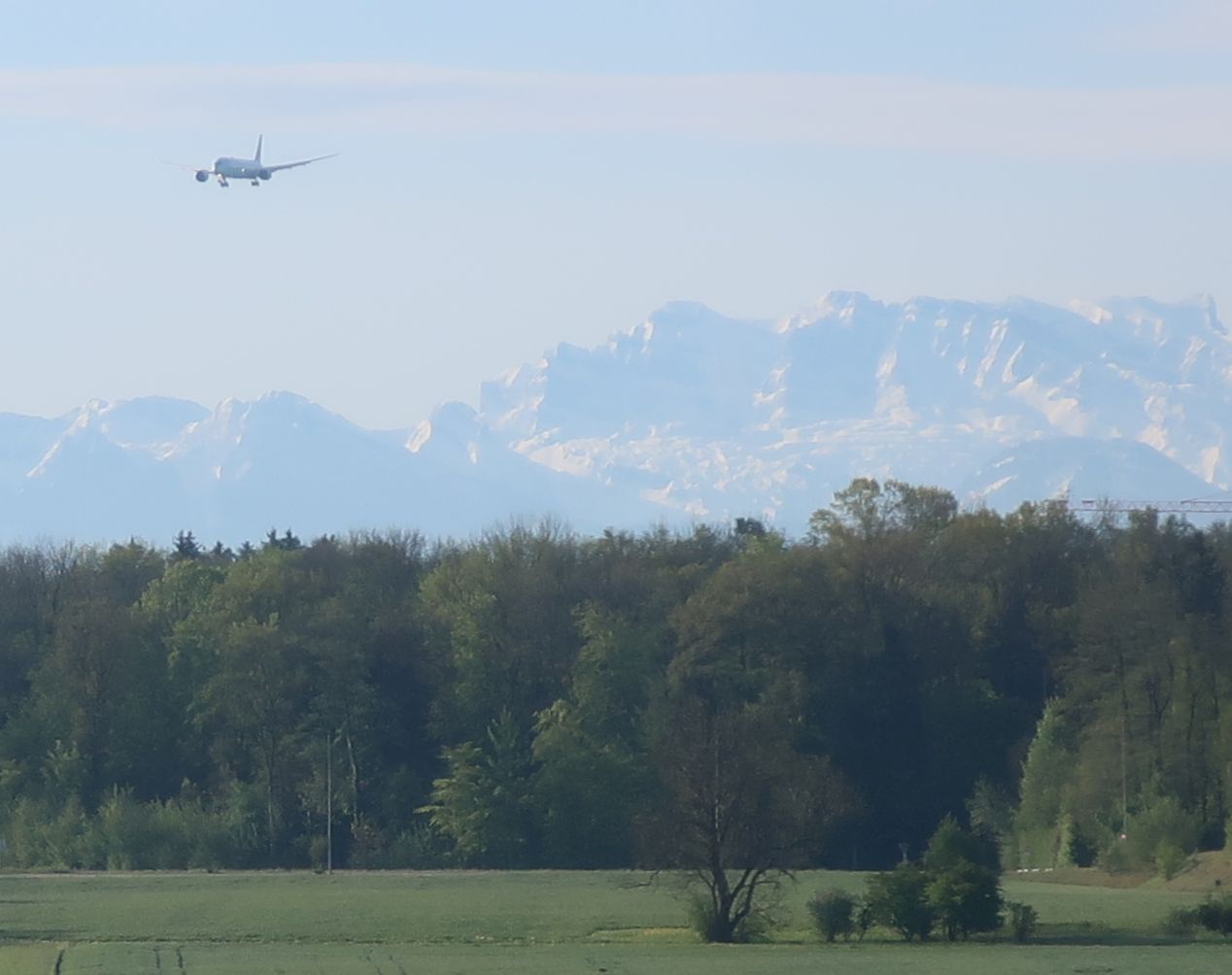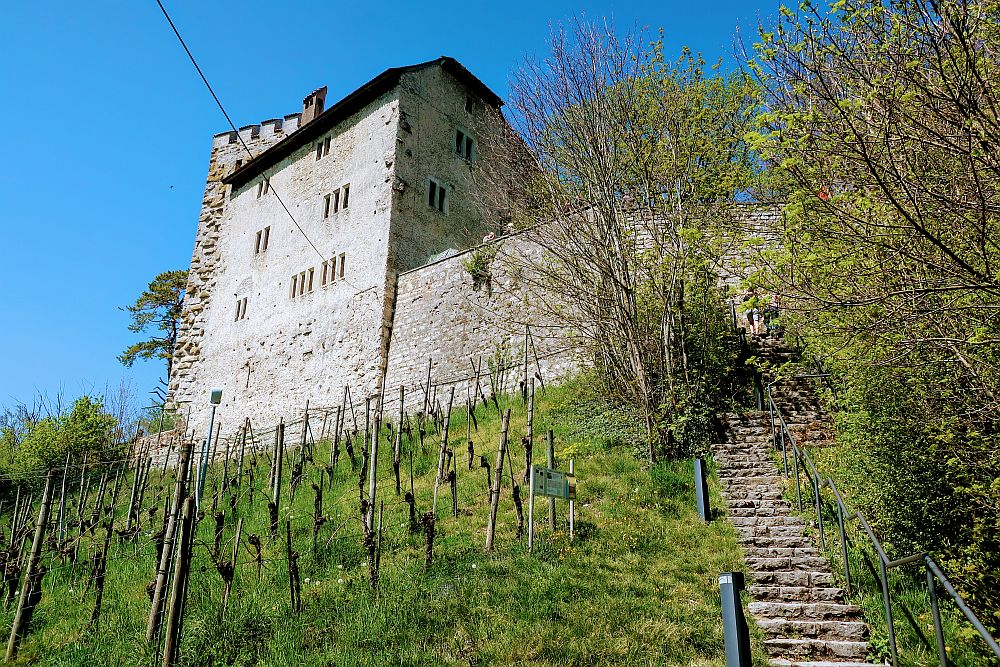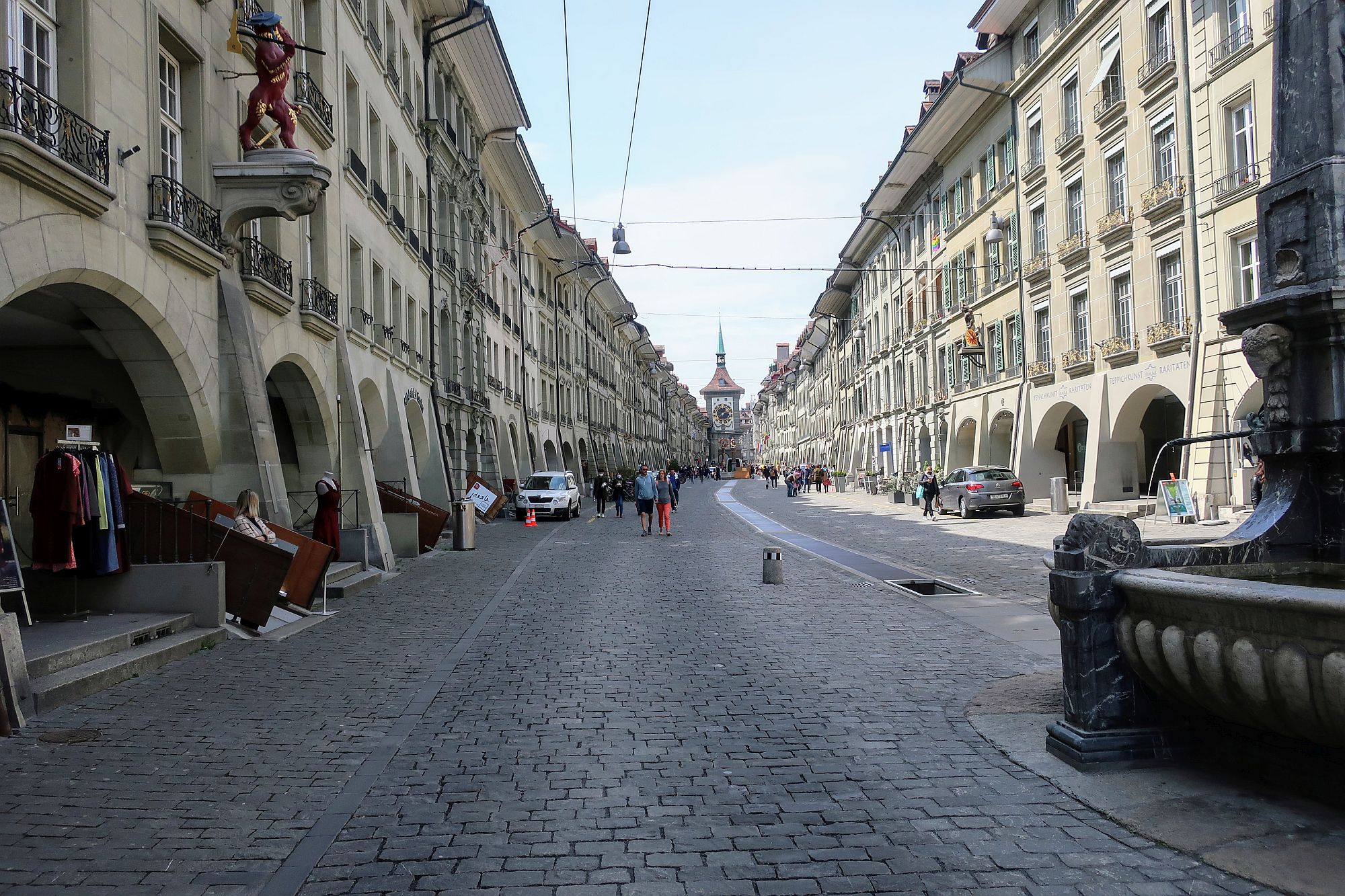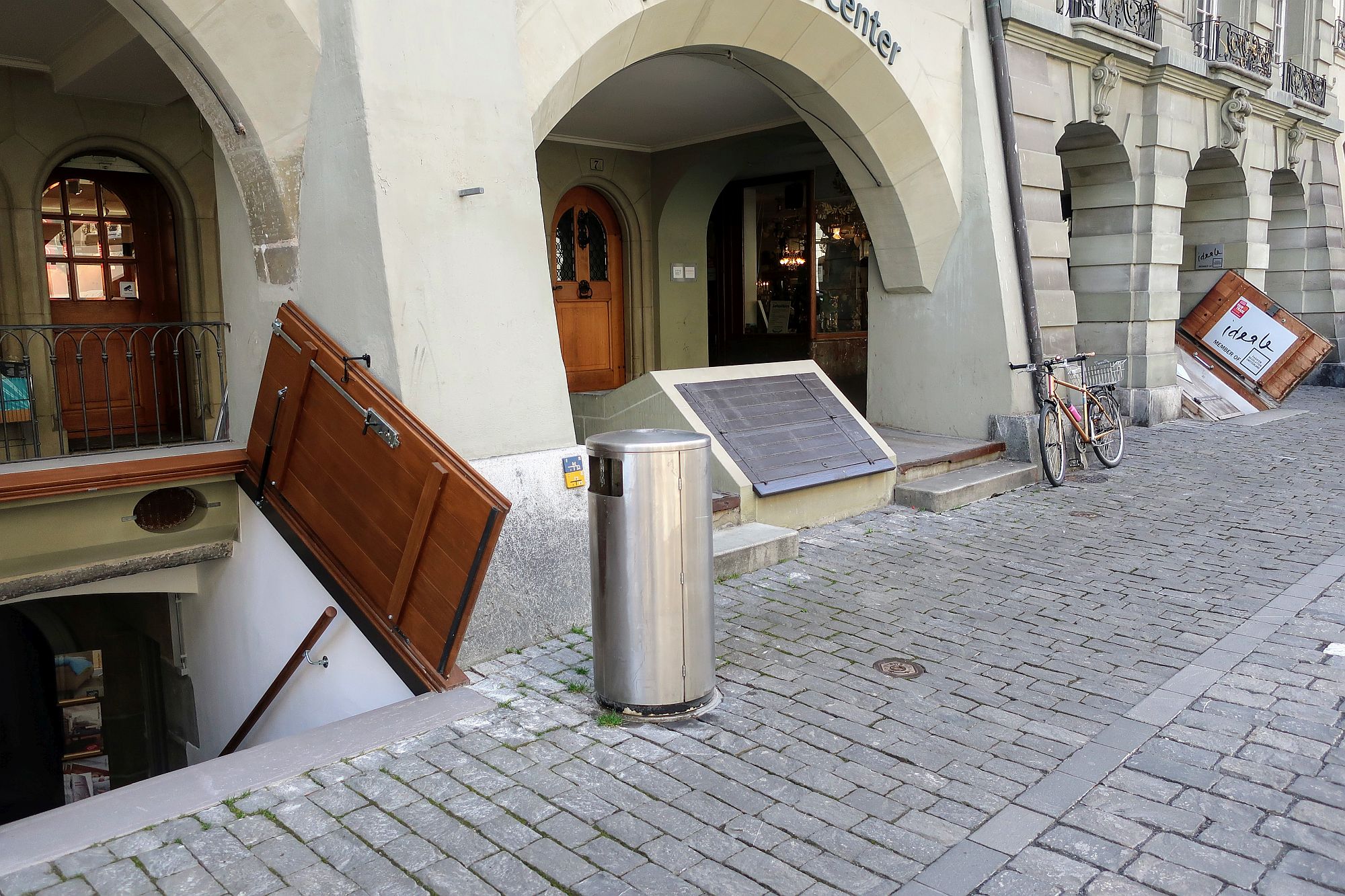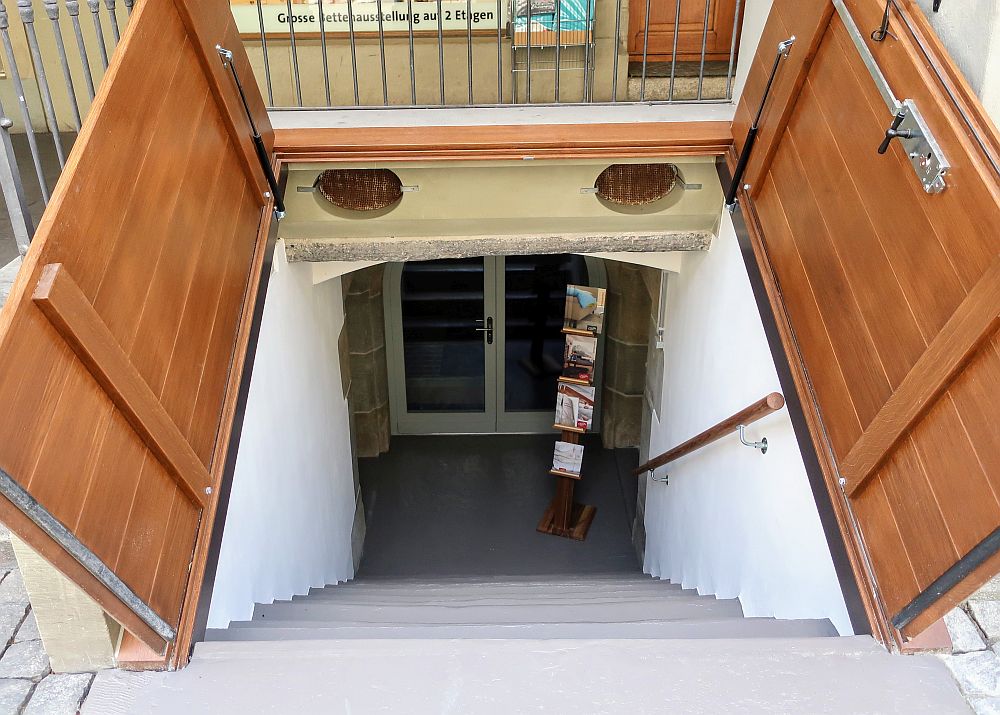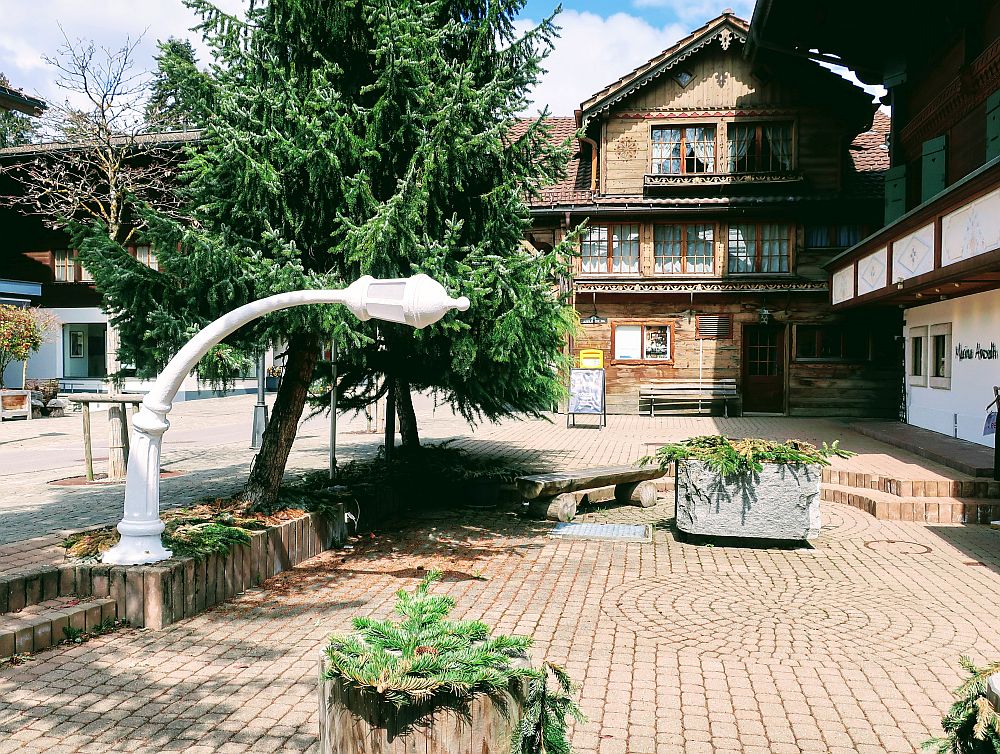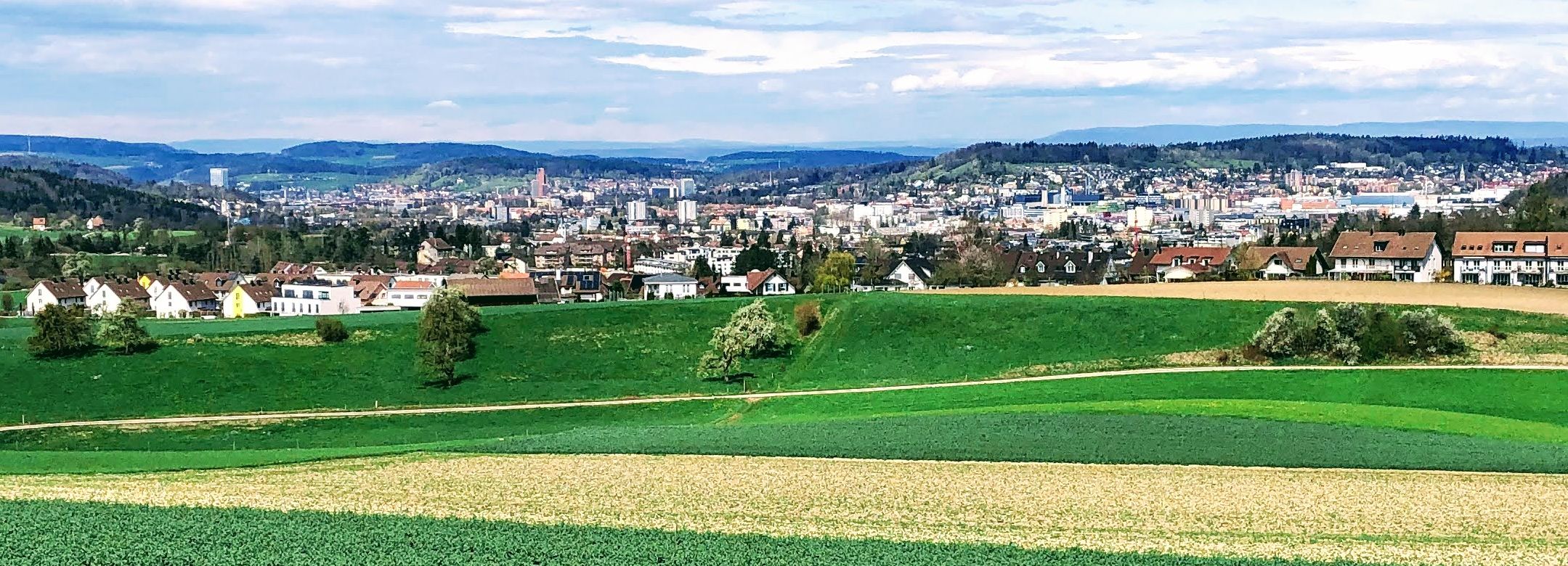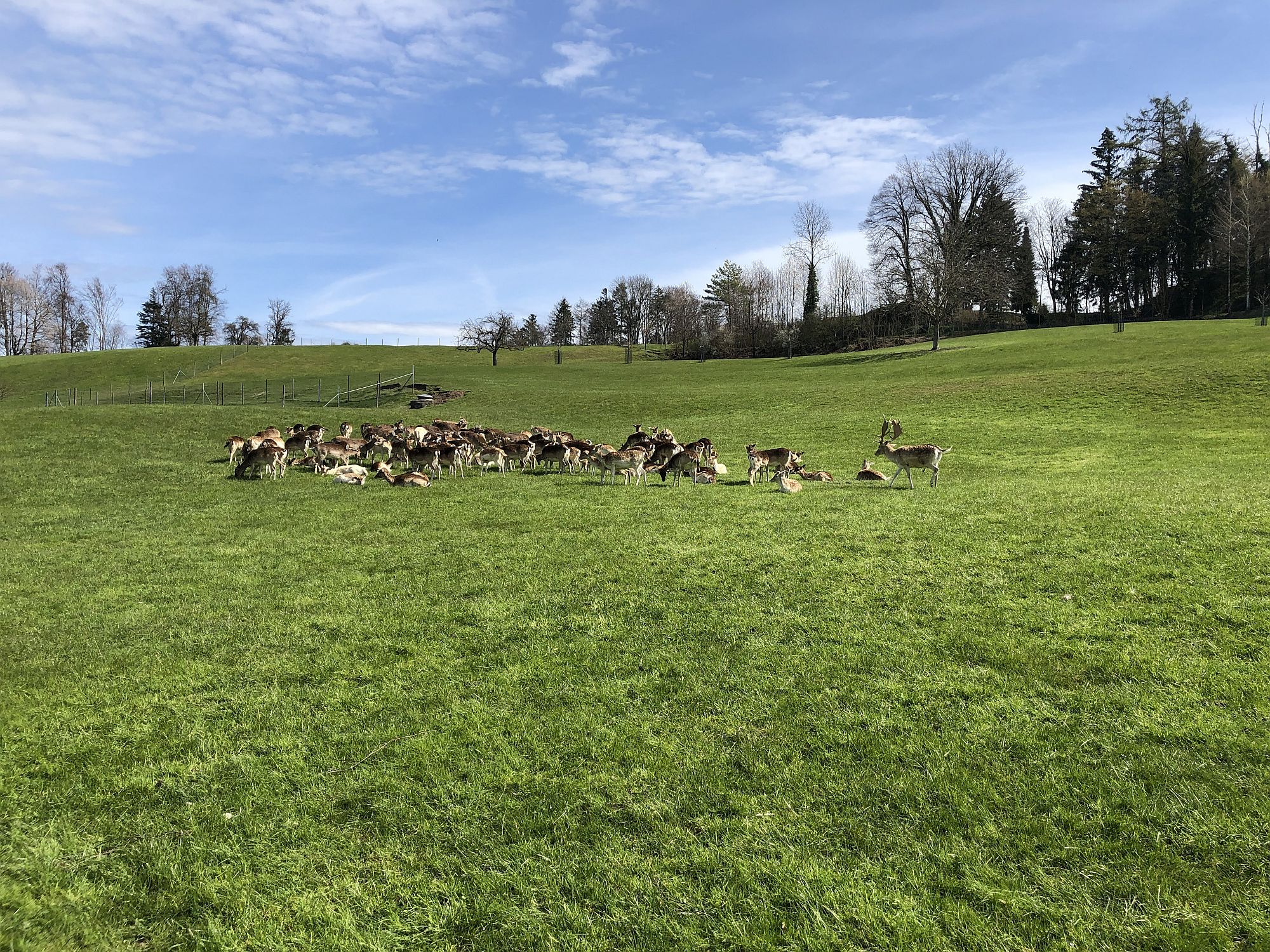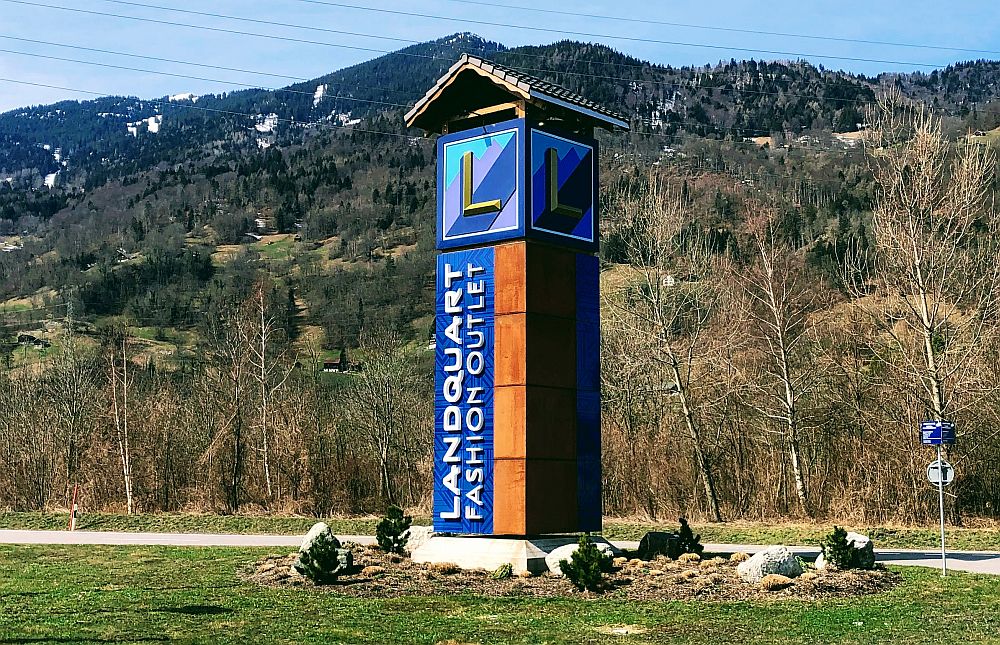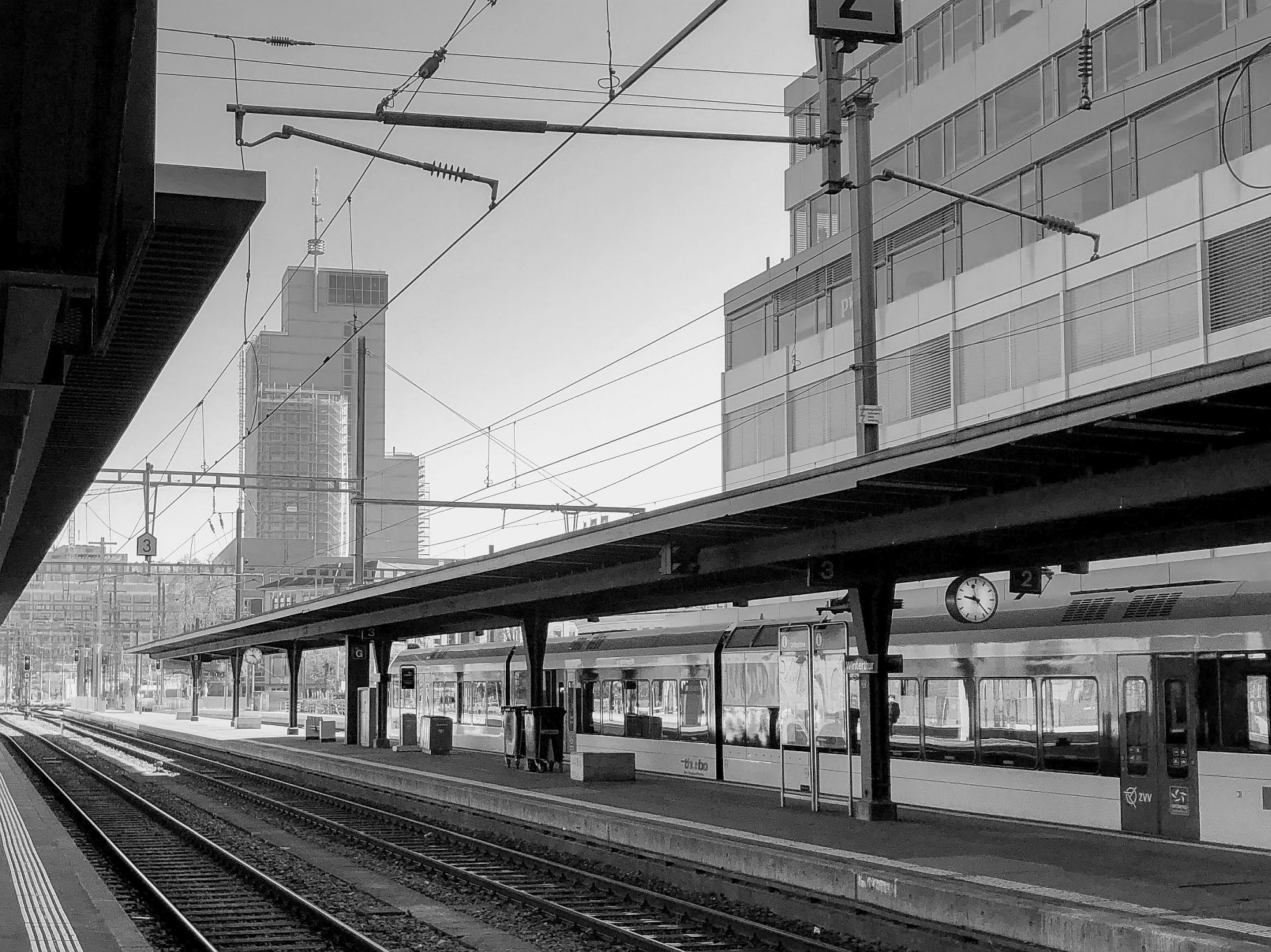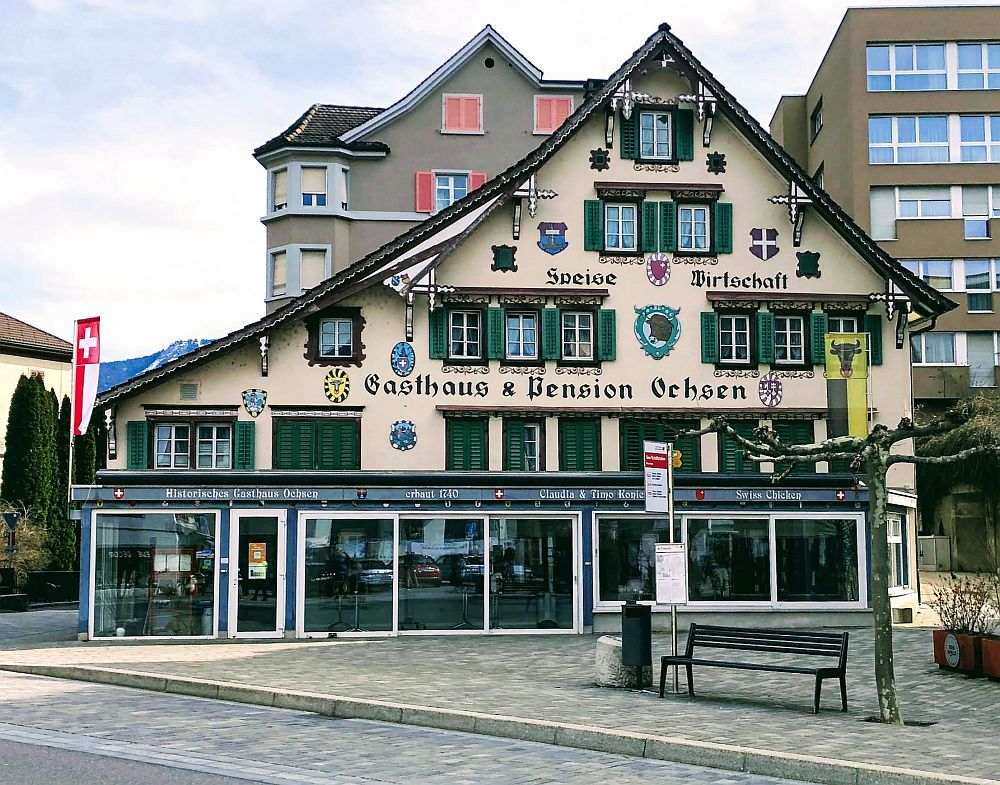Bank of the Rhein River, looking north, that is:
Swiss and Switzerland
Basel light
Basel building
Bern corridor
Road art
Bern houses
Winterthur cement
Continuing the series, here is a black-and-white snap of a cement factory in Winterthur,
Eschenberg Cow
Continuing to demonstrate the universal truth that it is impossible to take a bad snap of a good cow, I can’t tell you whether this cow self-identifies as an Eschenberg cow. But I can tell you I took this snap during my daily 15 km Nordic Walk in the forests of Winterthur, in a spot known as the Eschenberg:
This cow was one of 49 other cows being led to a new grazing field.
Amazing Swiss mystery
Every country is filled with mysteries . . . and Switzerland is no exception. I took this snap of a rotting, decrepit building, high and deep in the Alps of central Switzerland:
Really makes you stop and think . . . why? Perhaps it was at once time a building of historical significance, and now the owners are forbidden from destroying it? Or perhaps they receive financial benefits by having a damaged property on their land? Or perhaps . . . they just thought it looked nice – which I think it does!
Habsburg flower
Police building in Bern
PeakFinder – a constant companion if you live in Switzerland
The Alps and Switzerland are lot like the Pacific Ocean and the Earth. Yes, there are places on the Earth that are not the Pacific Ocean. But to a very good first approximation, the Earth is more or less equal to the Pacific Ocean.
The same goes for Switzerland. Yes, there are places so flat that some companies have set up remote offices for calibrating the flatness of things like rules and levels. But by and large, Switzerland is very mountainous.
Here’s where a great iPhone app called PeakFinder comes in. You start up PeakFinder, point it in any direction you like, and it shows you a superposition of the landscape together with detailed information about all the peaks. It even let’s you take superimposed pictures!
Here’s a great example:
As you can see here, PeakFinder provides you with many surprises. For example, in the snap above the peak Hausstock looks quite tiny – but in fact at 3’158 m it is by far the highest visible peak in the entire snap!
Landing at ZRH
The Swiss Alps are tricky things! You may think the Alps shown in the background here are just a little ways down the street – but they are not! In fact, they are so tall that they are nearly 2 hours’ drive from here by car!
That general “bump” you see is referred to as the Glärnisch, the direction is almost directly due south – and it reaches a maximum height of 2’914 meters or 9,560 feet.
Zurich door
Habsburg Castle
There are castles. And then there are castles. This is the Habsburg Castle, and it definitely belongs in the latter category. Not because of opulence and gold – but because of the sheer historical significance.
Located not too far from my home, it dates back to the year 1000, and it marks the spot where the very powerful Habsburg Dynasty was kicked off and more or less controlled huge swaths of Europe for literally hundreds of years – so long, in fact, that inbreeding within the family gave rise to genetic mutations such as the famous “Habsburg Jaw,” simliar to the likes of Jay Leno and John Kerry.
Fierce Swiss dragon of death
You do not – under any circumstances – want to come across one of these terrify, menacing, deadly creatures in Switzerland – well, at least not if you are just a few millimeters tall. Because in fact this fellow is hardly bigger than my finger. I took this snap at the Habsburg Castle in the village of the same name, in Switzerland.
The amazing, mind-blowing subterranean stores of Bern
This is UNESCO-recognized city Bern in the Kanton of the same name, in Switzerland. There are many amazing, mind-blowing things in this snap that each deserve their own blogs:
In this blog I’ll focus on the amazing, mind-blowing subterranean stores. If you look to the bottom left, you’ll see half a woman with blond hair. That is not really half a woman – that would be silly! In fact, it is a whole woman, and this woman is standing in an entryway to a store located under the street.
This snap shows many such subterranean shops:
And if you get even closer, they look like this:
I don’t know much about the history of these subterranean shops, why for example people thought they were a good idea. I once spoke with a medieval historian (well, he was a modern historian, but his interest was the Middle Ages) and he said that the level of ground water had a huge impact on what we see today. So it is likely that Bern had a very low groundwater table – which would make sense because it is very high above a river – but that’s just a guess.
Swiss mountain brook
Lightpole in Gstaad
Only in Switzerland
OK, probably not only in Switzerland. But certainly in Switzerland.
An automatic vending machine at the main train station in Gstaad that sells so-called “Alp-Cheese,” a very special type of cheese that is by law required to be made from the milk of cows that graze at very high altitudes in the Swiss Alps:
It’s on my to-do list to explore this topic further. From what I have been able to gather, there is an altitude defined by law above which the cows are required to graze; I’ve also read that the Swiss government pays a bonus to the farmers (per cow) as an incentive for them to keep this industry alive.
What the Neanderthals saw
OK, to be honest I don’t know if they would have seen this exactly, since most of the buildings were probably not here around 40’000 years ago. But I’ve recently posted about a supposed clan of Neanderthals that lived in an enclave in Switzerland and, in this way, contributed strange words to the language.
At any rate, with the colors I find it a quite pretty snap.
Venison farm
OK, I don’t know if they call it a venison farm. But that’s what it is:
I’m not sure why – quite probably due to the meat lobby – but deer meat is very uncommon in the US compared to Europe.
What I find interesting about this shot is how the deer like to remain so close to one another, and how the stag deer (shown on the right) is actually on the edge of the crowd, maybe in order to better defend them?
In addition to farmed deer, the area of north central Switzerland where I currently live is filled with wild deer. I see a few every single morning when I take my daily 10 km Nordic Walk in the nearby forest. Generally they are quite tame and usually they’ll let me walk right by them without running away.
The signs at Landquart – 3
Continuing the series, here is the sign you see when you approach the outlet mall by car:
I tried looking up the village of Landquart, because the name is interesting and I wanted to know more about its origin. Sadly, according to this source, no information is given other than Der Herkunft des Namens ist fraglich. This village is located in the middle eastern area of Switzerland known as Graubünden, and – even though the country is very far away – here people speak various dialects of the Romanian language, known collectively as Romansch.
Winterthur tracks
I’m taking a self-learning training on LinkedIn about photography – I thought it was high time I dived in and learned from the professionals!
In this course they want you to photograph subjects in black-and-white, so you can focus exclusively on things like form, layers, perspective, etc.
For me, I like the way that the tracks and platform draw the observers attention to the skyscraper in the background.
Tourist restaurant in Ingenbohl
Continuing the series, here is a nice snap of a restaurant for tourists in the Swiss village of Ingenbohl,
